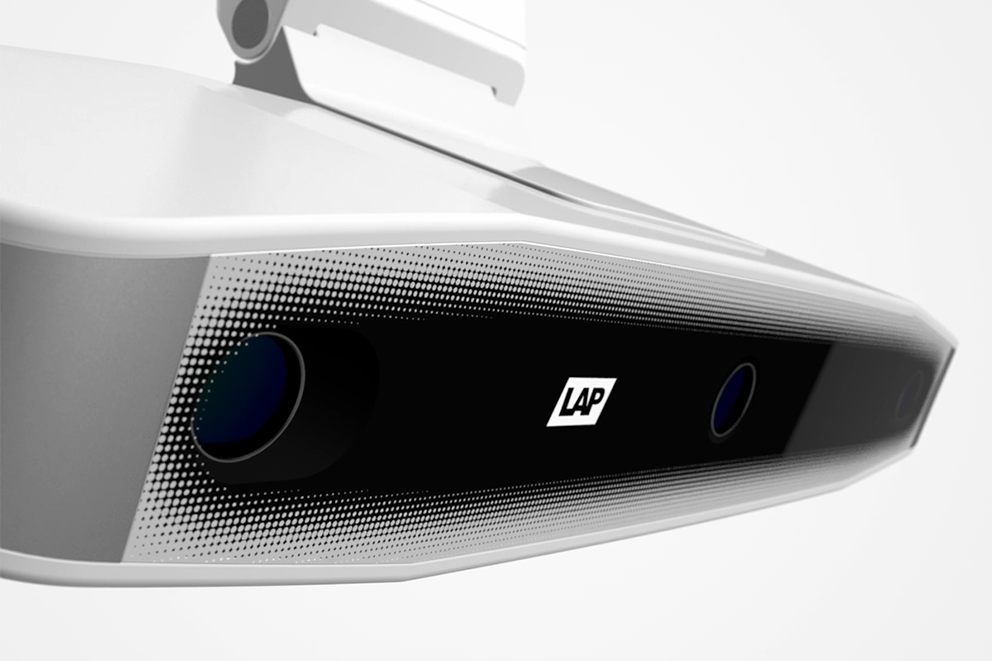We focus on people—advanced product design in radiotherapy
The camera pod design development of LUNA 3D, in collaboration with industrial designer Milani, combines the technological advancement of the camera pod with optimal user experience for medical professionals and patient-centricity.
Patients often come face to face with a variety of technical equipment in radiotherapy, large devices in particular. This environment, intimidating in both its complexity and technology, can itself generate even more uncertainty and anxiety in what a worrying health situation is already. This is where product design comes into play as a key factor, not only to optimize the functionality of the devices, but also to create a calming and reassuring atmosphere in the treatment room. The focus is on human-centered design, which not only takes account of medical technology requirements, but also focuses on the needs of patients and users.
The LUNA 3D product development process focused on this kind of product design too. LAP was able to rely on the support of Milani Design & Consulting AG in designing the LUNA 3D camera pod. Thomas Speck, Vice President New Product Solutions at LAP, emphasizes the strategic decision to involve an industrial designer in LUNA 3D’s development process. The goal was clear: To create a solution that is not only technologically advanced, but also aesthetically pleasing, integrating seamlessly into existing medical environments and responding to users’ needs.
“We weren’t just looking for a product. We wanted a solution that would provide a positive experience for both healthcare professionals and patients. The design needed to quell fears and at the same time meet the stringent regulatory demands in the medical technology sector,” he explains.
One of the reasons for selecting Milani was its many years of expertise in medical technology. The company’s roots go back to Francesco Milani, who founded the company 60 years ago. At that time, the term “product design” was still not really on anyone’s lips. Francesco Milani, originally a graphic designer, started out focusing on medical technology and so laid the foundations for the company’s success story. Today, Milani looks back on an impressive 3,900 successful projects.
Fernando Cruz, Industrial Designer at Milani, explains the demands that design is called on to meet: “Good design is not just a matter of taste for us, but a strategic tool. It should inspire people, offer added value, bring companies success and have a positive impact on the environment.” Milani’s principles are reflected in functional, user-centered solutions that integrate intuitive operation, emotionality and a company’s values.
LAP, Milani and the engineers worked side by side throughout the entire design process in the LUNA 3D development. Particular attention was paid to the user experience felt by healthcare professionals as well as patient centricity. “We worked intensively with a select group of reference customers to ensure that the design was not only functional, but also emotionally persuasive. One of the key decisions was to use aluminum to efficiently dissipate heat and eliminate the need for ventilation openings in the housing. This makes it easier to clean and maintain and increases the appliance’s service life,” says Thomas Speck. “The decision to opt for a glass front that doesn’t look like eyes or cameras was also a very conscious one,” adds Fernando Cruz. “The device should not look like a monitoring system to patients, but rather it should be reassuring and user-friendly. At the same time, we designed the surfaces to create an interplay of light and form that gives LUNA 3D a striking, professional appearance and a high recognition value.
The design process for medical technology products is all about striking the balance between regulatory requirements, usability, and aesthetics. The challenge here is to find solutions that not only meet technical requirements, but also satisfy users’ needs. In the case of LUNA 3D, the focus was on the patient as well as the user. The camera pod demonstrates how innovation and design can go hand in hand to ensure not only technological progress but also an excellent user experience.

